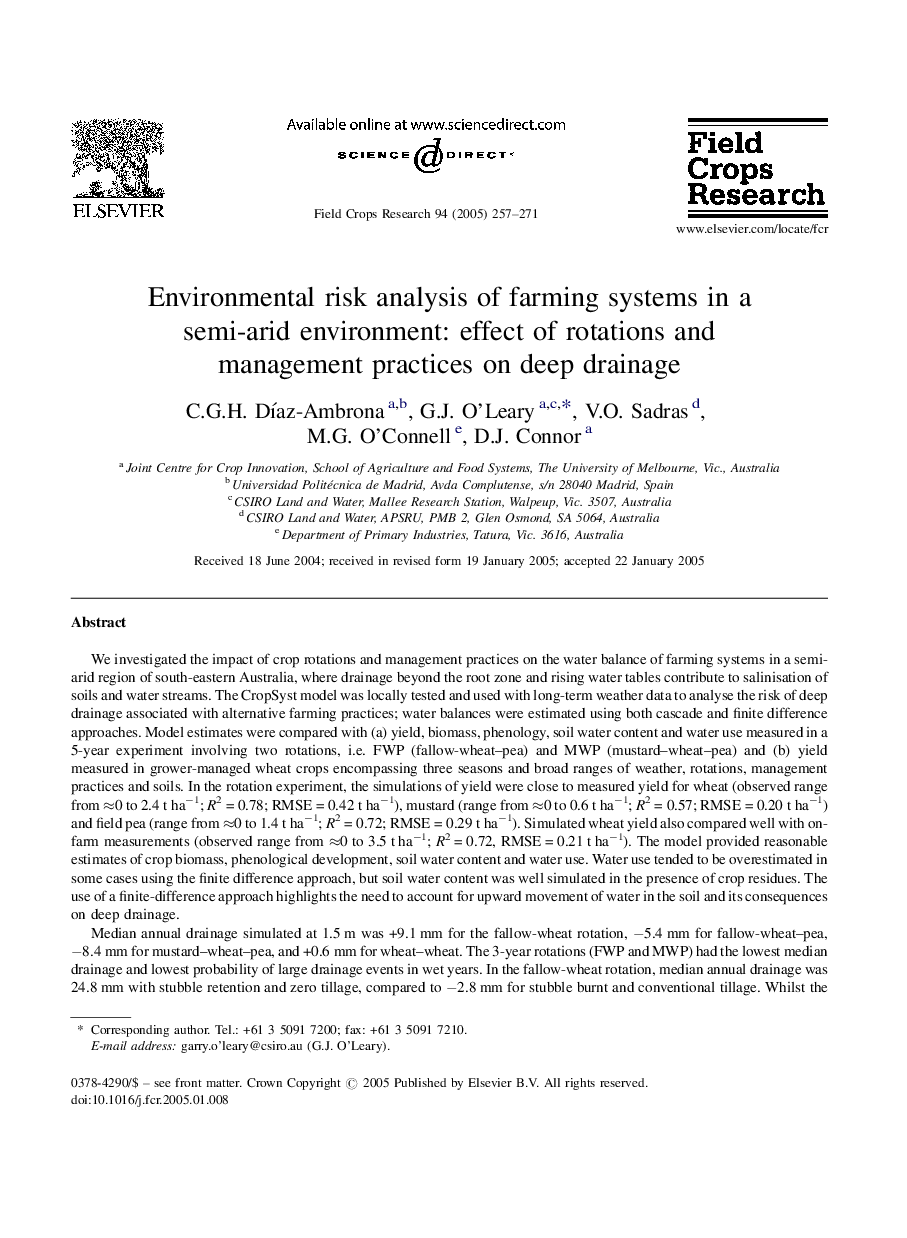| Article ID | Journal | Published Year | Pages | File Type |
|---|---|---|---|---|
| 9473515 | Field Crops Research | 2005 | 15 Pages |
Abstract
Median annual drainage simulated at 1.5Â m was +9.1Â mm for the fallow-wheat rotation, â5.4Â mm for fallow-wheat-pea, â8.4Â mm for mustard-wheat-pea, and +0.6Â mm for wheat-wheat. The 3-year rotations (FWP and MWP) had the lowest median drainage and lowest probability of large drainage events in wet years. In the fallow-wheat rotation, median annual drainage was 24.8Â mm with stubble retention and zero tillage, compared to â2.8Â mm for stubble burnt and conventional tillage. Whilst the median response is indicative of comparative system performance, large episodic drainage events can be expected to be more frequent under fallow-wheat and even larger events with stubble retention and zero tillage. Stubble retention and zero tillage might be justified to increase and stabilise crop yield and reduce soil erosion but they do need to be assessed against the requirement to reduce deep drainage that is implicated in rising river and soil salinisation.
Related Topics
Life Sciences
Agricultural and Biological Sciences
Agronomy and Crop Science
Authors
C.G.H. DÃaz-Ambrona, G.J. O'Leary, V.O. Sadras, M.G. O'Connell, D.J. Connor,
